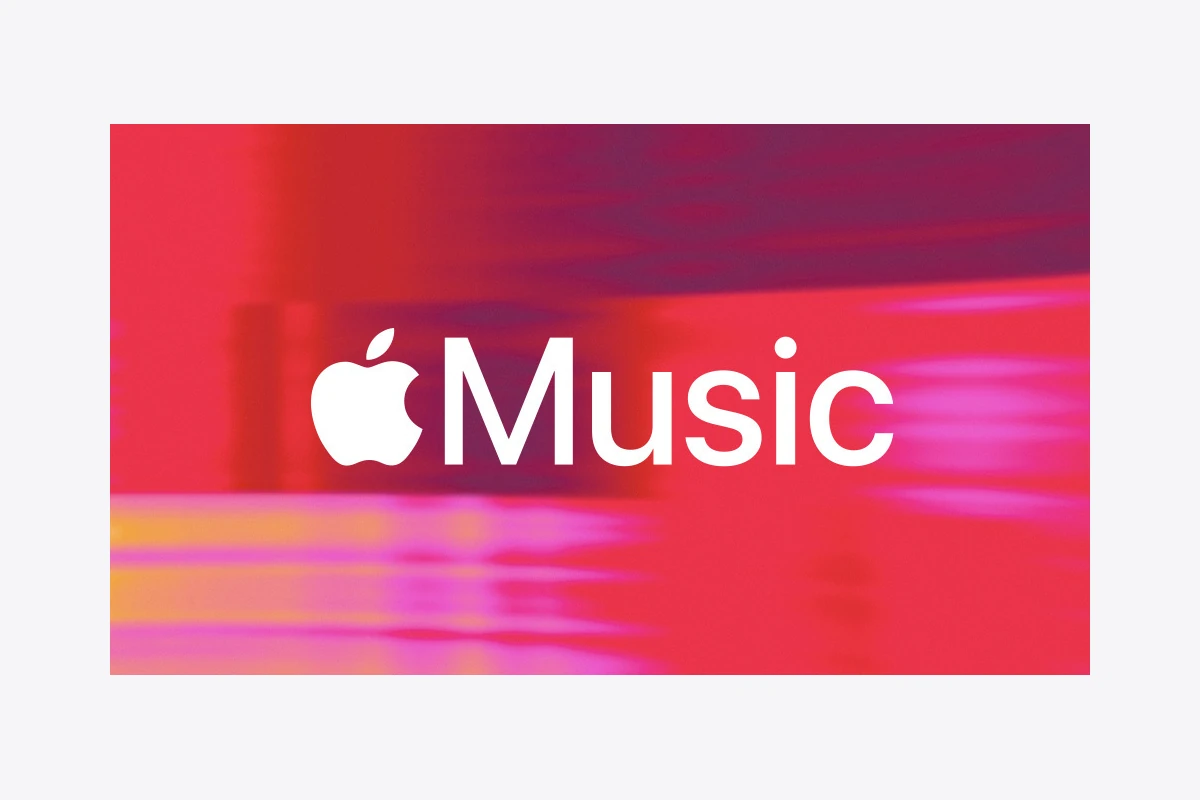Apple Music continues to evolve as one of the most powerful streaming platforms, and with the release of iOS 26 in September 2025, the service is receiving some of its biggest upgrades in years. These updates aren’t just cosmetic tweaks — they fundamentally change how listeners discover, organize, and enjoy music across Apple’s ecosystem.
Below, we’ll dive into all the major new features Apple Music is getting with iOS 26, how they work, and why they matter.
1. AutoMix: Seamless Playlist Flow
One of the standout features in iOS 26 is AutoMix, a new tool that automatically blends songs in a playlist together. Instead of abrupt stops and starts, tracks now transition smoothly, much like a DJ set. For casual listeners, this makes playlists feel more polished and immersive, while for party hosts, it removes the need for manual crossfading apps.
This feature is particularly useful for workout mixes, road trip playlists, or any situation where you want uninterrupted energy.
2. Pinned Music and Playlist Folders
Apple has also introduced pinned music and playlist folders, giving users more control over how they organize their libraries.
- Pinned music allows you to keep your favorite playlists, albums, or artists at the very top of your Library for quick access.
- Playlist folders make it possible to group related playlists together. For example, you could create a folder for “Workout Mixes” or “Road Trip Vibes” and store multiple playlists inside.
This is a small but powerful organizational tool, especially for users with massive libraries.
3. Lyrics Translation and Pronunciation Guides
As Apple Music continues to expand globally, lyrics translation has become one of iOS 26’s most exciting updates. Users can now view translated lyrics for songs in foreign languages directly within the app.
Even more impressive, Apple has added pronunciation guides, which help listeners sing along phonetically to songs in languages they don’t speak. This feature makes international music more accessible and enjoyable, bridging cultural and linguistic gaps.
4. Smarter Recommendations with Adaptive Design
Apple Music in iOS 26 introduces a smarter, adaptive recommendation system. The app now tailors its interface and suggestions based on how familiar you are with the service:
- For new users, Apple Music highlights simple, beginner-friendly features to help them get started.
- For experienced users, the app gradually surfaces more advanced tools, like AutoMix customization or deeper playlist management options.
This adaptive design ensures that Apple Music grows with you, making it less overwhelming for newcomers while still rewarding power users.
5. Cross-Platform Parity: Apple Music 5.0 for Android
Apple hasn’t forgotten about Android users. Alongside iOS 26, the company released Apple Music 5.0 for Android, which brings all of these new features — AutoMix, pinned music, playlist folders, and lyrics translation — to non-Apple devices.
This move signals Apple’s commitment to keeping Apple Music competitive across platforms, not just within its own ecosystem.
Why These Updates Matter
With iOS 26, Apple Music is positioning itself as more than just a streaming service. It’s becoming a personalized music hub that adapts to each listener’s needs. Features like AutoMix and pinned music improve convenience, while lyrics translation and pronunciation guides expand cultural accessibility.
By focusing on both organization and discovery, Apple Music is closing the gap with Spotify’s personalization features while also carving out unique strengths of its own.
Final Thoughts
The iOS 26 update marks one of the most ambitious evolutions of Apple Music to date. Whether you’re a casual listener who just wants smoother playlists, a music lover exploring new cultures, or a power user managing hundreds of playlists, these new tools make Apple Music smarter, friendlier, and more global than ever.
If you haven’t updated yet, Apple Music’s latest features are available now with iOS 26 and Apple Music 5.0 for Android — and they’re well worth exploring.
Exploring Apple Music’s Features
Apple Music continues to evolve as one of the leading music streaming platforms in 2025. Recent updates have expanded the service with three brand-new global radio stations, bringing more variety to listeners worldwide. The app has also undergone significant changes in iOS 18, focusing on more personalized content recommendations to help users discover music that matches their unique tastes.
Apple Music now provides enhanced tools for artists to create, release, promote, and measure their music on a global stage. These improvements make it easier for musicians to connect with fans and share their work. The platform has also improved its organization and SharePlay capabilities, allowing for better music sharing experiences among friends and family.
For iPad users, Apple Music has introduced powerful device-specific features that take advantage of the larger screen. Song Credits, which was introduced in iOS 17, continues to be a popular feature as it allows fans to discover the people behind their favorite songs.
Key Takeaways
- Apple Music has expanded with new radio stations and improved personalized recommendations in recent updates.
- The platform offers enhanced tools for artists to share and promote their music globally.
- New features like improved SharePlay and Song Credits help users better connect with their music and share experiences.
Apple Music offers a rich set of features designed to enhance the listening experience for music lovers. The platform combines extensive content with personalized recommendations and seamless integration across Apple devices.
Music Library and Content Discovery
Apple Music gives users access to over 100 million songs, all available without ads. Subscribers can create personalized libraries that seamlessly blend Apple’s vast catalog with their own music files. This feature allows listeners to maintain their existing collection while exploring new content.
The platform offers curated playlists and recommendations based on listening habits. Users can discover music across various genres, from pop stars like Taylor Swift and SZA to Latin artists like Rauw Alejandro.
Music discovery is made easier with personalized recommendations that appear in the “Listen Now” section. These suggestions become more accurate as users interact with the service by playing tracks, adding albums to their library, and marking favorites.
Apple Music also features exclusive content and early releases from popular artists, giving subscribers early access to new music.
User Interface and Experience
The Apple Music interface is designed to be intuitive and user-friendly across all Apple devices. The Music app on iPhone and iOS devices offers quick access to library content, search functions, and radio options.
Sound quality is a standout feature with Spatial Audio and lossless audio options. Spatial Audio provides an immersive listening experience that makes music sound like it’s coming from all around you.
A newer feature called Apple Music Sing transforms the app into a karaoke platform, displaying lyrics in real-time and allowing users to adjust vocal levels.
The web version at music.apple.com offers similar functionality to the app, letting users stream their library and discover new music without downloading software. This makes Apple Music accessible from any browser.
Integration with Other Apple Services
Apple Music integrates seamlessly with the entire Apple ecosystem. The service syncs listening history and libraries across iPhone, iPad, Mac, and Apple TV devices through iCloud.
Users can ask Siri to play specific songs, artists, or playlists, making hands-free control simple. Commands like “Play the latest Taylor Swift album” or “Add this song to my workout playlist” work across Apple devices.
The Music app comes pre-installed on iOS devices, eliminating the need for separate downloads. This integration extends to CarPlay, allowing drivers to safely access their music while on the road.
Apple Music also connects with other Apple services like Fitness+, providing specialized playlists for workouts. Sharing music with friends and family is easy through Messages and social media platforms.
Current Trends and Future Prospects
Apple Music continues to evolve in the competitive streaming landscape with innovative features and strategic partnerships. The platform is embracing personalization while expanding its technological capabilities to meet changing listener demands.
Exclusive Releases and Artist Partnerships
Apple Music has intensified its focus on securing exclusive content to differentiate itself in the crowded streaming market. The platform frequently collaborates with major artists for limited-time exclusive releases and special editions of albums.
According to industry reports, these exclusivity strategies have delivered mixed results. While Apple never overtook Spotify in total user numbers, exclusive releases have helped drive periodic subscription spikes.
The platform leverages its editorial opportunities to highlight emerging artists through curated playlists and featured content. This approach benefits both established musicians and independent artists seeking wider audiences.
Apple Music also utilizes its connection to the broader Apple ecosystem, bundling music subscriptions with other services to enhance value. This integration strategy helps strengthen customer loyalty in the face of intense competition.
Advancements in Music Technology
The upcoming iOS 18 update promises significant enhancements to Apple Music’s recommendation algorithms. These improvements aim to deliver more personalized content suggestions based on listening habits and preferences.
Apple has invested heavily in audio quality innovations, including:
- Spatial Audio with Dolby Atmos
- Lossless Audio streaming
- DJ Mixes with isolated stems technology
- Advanced classical music categorization
The platform has made notable progress in classical music organization, addressing the unique cataloging challenges of composers like Beethoven and Brahms. This targeted approach helps distinguish Apple Music from competitors less focused on classical genres.
Sound quality remains a priority, with Apple continually refining its audio processing to enhance the listening experience across devices. The company’s work with artists and producers ensures recordings sound optimal on their platform.
Comparative Analysis With Other Streaming Services
Apple Music maintains its position as the second-largest music streaming service globally, behind Spotify. While Spotify leads in total users, Apple Music generates higher per-user revenue through its subscription-only model.
Key competitive differences include:
| Feature | Apple Music | Spotify | Other Services |
|---|---|---|---|
| Free Tier | No | Yes | Varies |
| Audio Quality | High (Lossless) | Standard | Varies |
| Integration | Apple Ecosystem | Cross-platform | Limited |
| Content Exclusives | Moderate | Limited | Rare |
Unlike Spotify’s advertising-supported free tier, Apple Music remains subscription-only. This business model contributes to Apple’s services segment, which has become increasingly important as iPhone sales growth slows.
Apple Music’s editorial approach differs from competitors, with human curation playing a significant role alongside algorithmic recommendations. This balance helps create distinctive playlist experiences for users seeking musical discovery.
Frequently Asked Questions
Apple Music continues to evolve with new features, subscription options, and content changes. Users have many questions about these developments as Apple enhances its music streaming platform to compete with other services.
What are the latest updates in Apple Music with iOS 18?
With iOS 18, Apple Music introduced an improved user interface with more customization options. The new update features enhanced recommendation algorithms that better understand listening habits.
The platform now offers spatial audio for more tracks, creating a more immersive listening experience. Users can also enjoy collaborative playlists where friends can add songs together.
How does Apple Music compare to Spotify in the latest features?
Apple Music currently offers higher audio quality with its lossless audio option at no extra cost. This provides CD-quality sound that Spotify’s premium tier doesn’t match yet.
The Apple Music catalog now contains approximately 100 million songs compared to Spotify’s 82 million. Apple has also invested more in exclusive artist content and live radio stations.
Integration with Apple devices remains smoother than Spotify, especially with HomePod and Apple Watch features. However, Spotify still leads in social sharing and discovery tools.
What new features have been introduced in Apple Music recently?
Apple Music recently added expanded lyrics functionality with time-synced words for more songs. The service now offers improved music discovery tools that highlight new artists.
The platform introduced better playlist customization with more cover art options and sharing tools. Users can now also see listening statistics similar to Spotify Wrapped but available year-round.
Concert integration features now alert users to upcoming shows from their favorite artists. The service also expanded its classical music offerings through Apple Music Classical.
What are the current subscription plans offered by Apple Music?
Individual plans cost $10.99 monthly, giving one person full access to the entire catalog. The Family plan costs $16.99 monthly and allows up to six users to have individual accounts.
Students can subscribe for $5.99 monthly with verification of enrollment. Apple also offers the Apple One bundle, which includes Apple Music along with other services like Apple TV+ and iCloud storage.
Voice Plan, available in select regions for $4.99 monthly, offers limited access through Siri commands only. All plans include access to lossless audio and spatial audio features.
How can users access the Apple Music 3 or 6 months free promotion?
New users can get 1 month free when signing up for Apple Music directly. Purchasing eligible Apple devices like AirPods, HomePod, or Beats products typically includes 3-6 months of free Apple Music.
Some mobile carriers partner with Apple to offer extended free trials. Users should check with their provider about current promotions.
To redeem these offers, users need to sign in with their Apple ID on the new device and accept the offer when prompted. The free period automatically converts to a paid subscription unless canceled before the trial ends.
Why has Apple Music reportedly removed a significant number of songs?
Apple Music occasionally removes songs due to expired licensing agreements with certain music labels. This process is normal for streaming platforms as contracts are renegotiated.
Some independent artists have reported their music being removed due to distribution changes. When artists switch distribution services, temporary gaps in availability can occur.
Apple also removes content that violates copyright laws or platform guidelines. Users who find missing songs should check if they’re available in different albums or compilations, as reorganization sometimes occurs.







